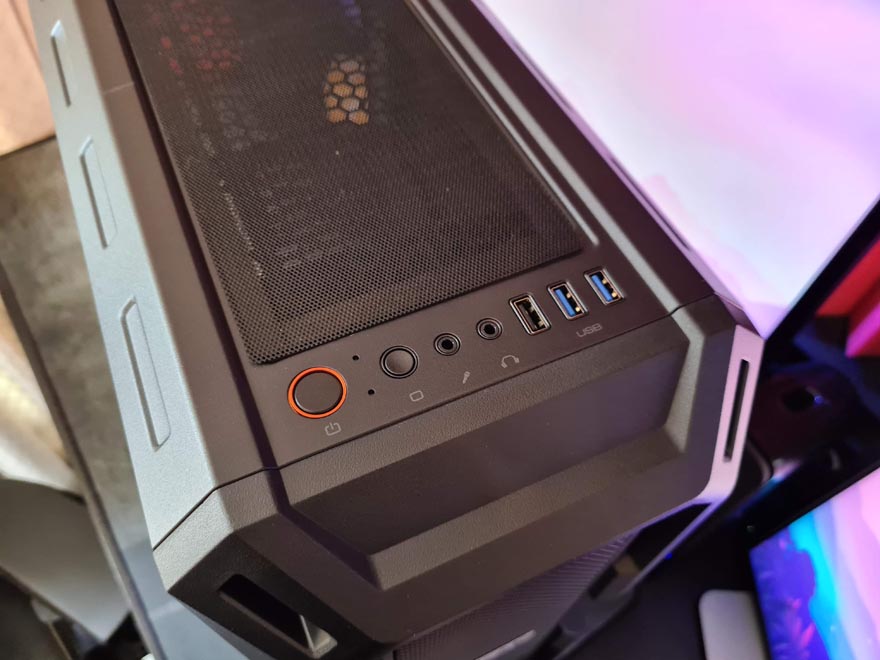Cougar MX440 MESH RGB PC Case Review
Peter Donnell / 3 years ago
Exterior
First impressions are good, with a really funky design that certainly grabs your attention. It’s clear that Cougar has built this to appeal to the gaming market, but hey, they are a gaming brand! Not that you couldn’t put this in your office too, but that’s up to you. There’s a large tempered glass window on the left side, and they’ve fitted it with screws at the back, so the glass doesn’t have any thumbscrews poking through.
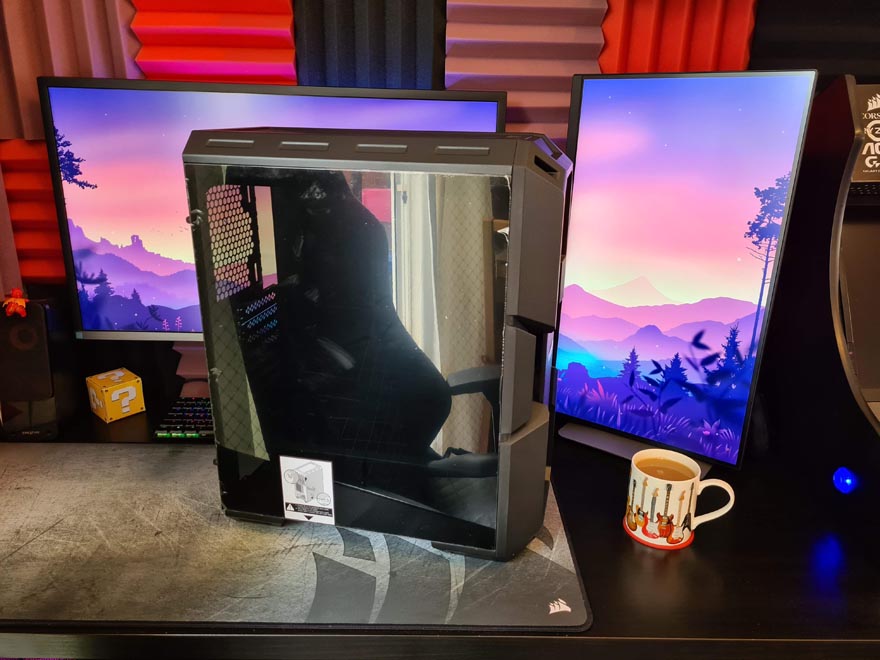
More towards the front, there’s a pretty deep front panel design. As the name suggests, this is the MESH variant of the case, so you get huge amounts of ventilation here.
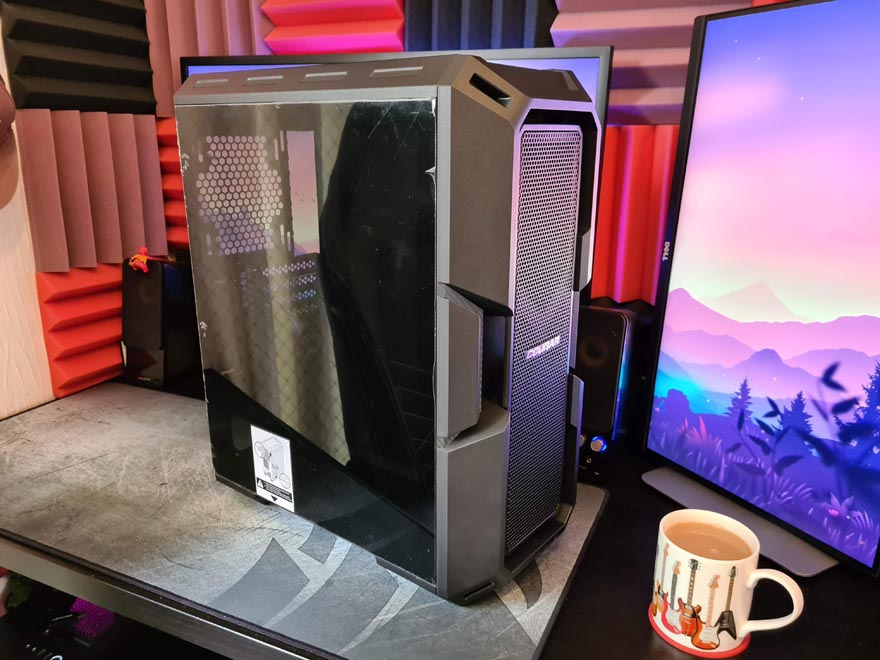
The mesh looks really cool, but while it offers up more direct airflow and cooling, it also still gives a good view of the three built-in ARGB fans, so you’ll be able to enjoy all that lovely RGB lighting.
There are large gaps on the front panel, but there is a filter behind all this so don’t worry too much about dust. Furthermore, I like that little bit of fake Carbon Fibre they’ve added, which is actually a common trait for Cougar cases.
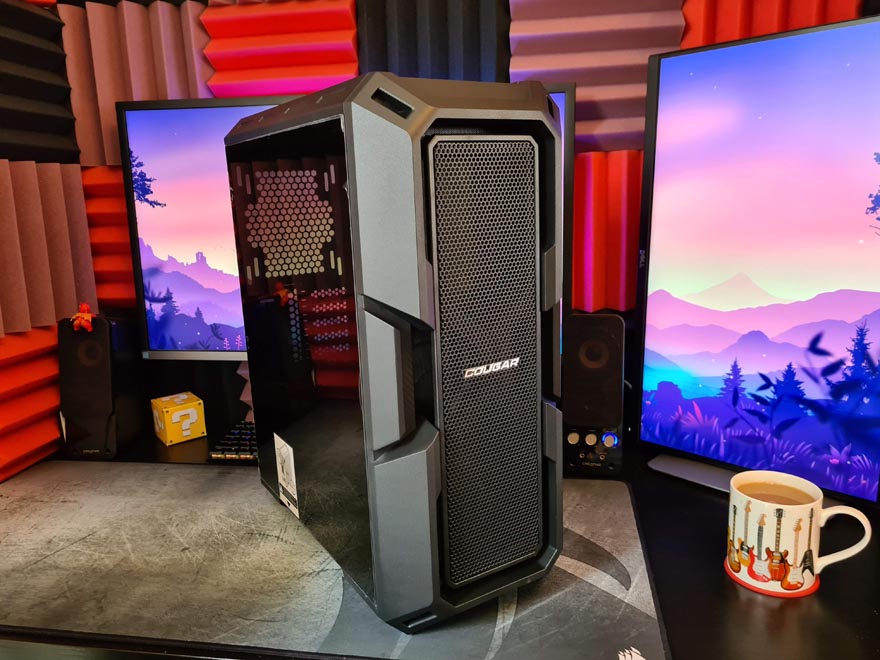
Down the right side, it’s just a solid black panel, mounted with a pair of thumbscrews towards the rear. Nothing complex, but it looks neat and tidy. You can also see the case has some pretty large feet on it, giving it good ground clearance for the PSU intake to get plenty of airflow.
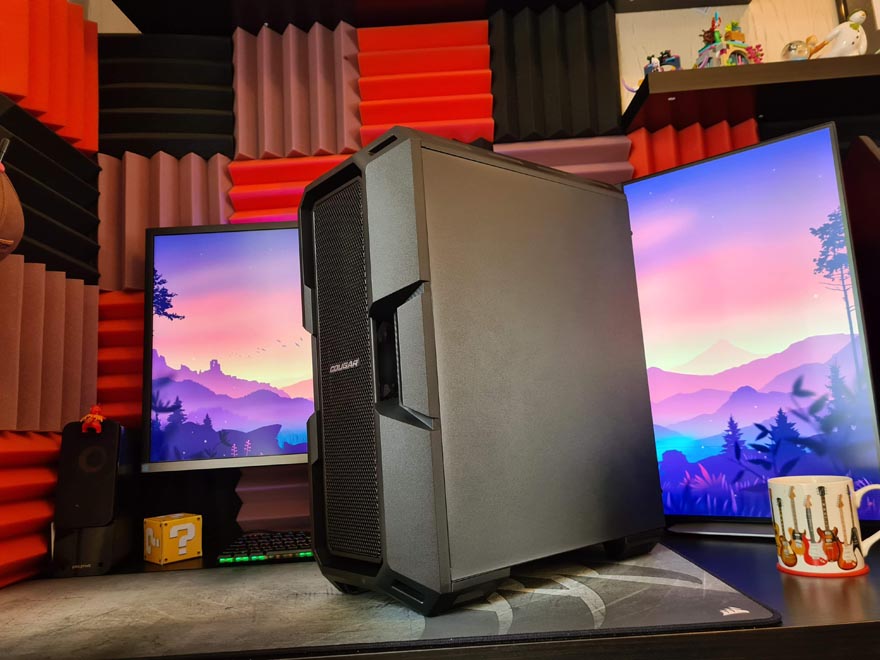
Around the back, it’s business as usual, with a fan mount at the top. The fan mount is capable of supporting 120/140mm models, but as you can see, you’ll need to provide your own. There are seven expansion slots, and finally an ATX PSU mount at the bottom.
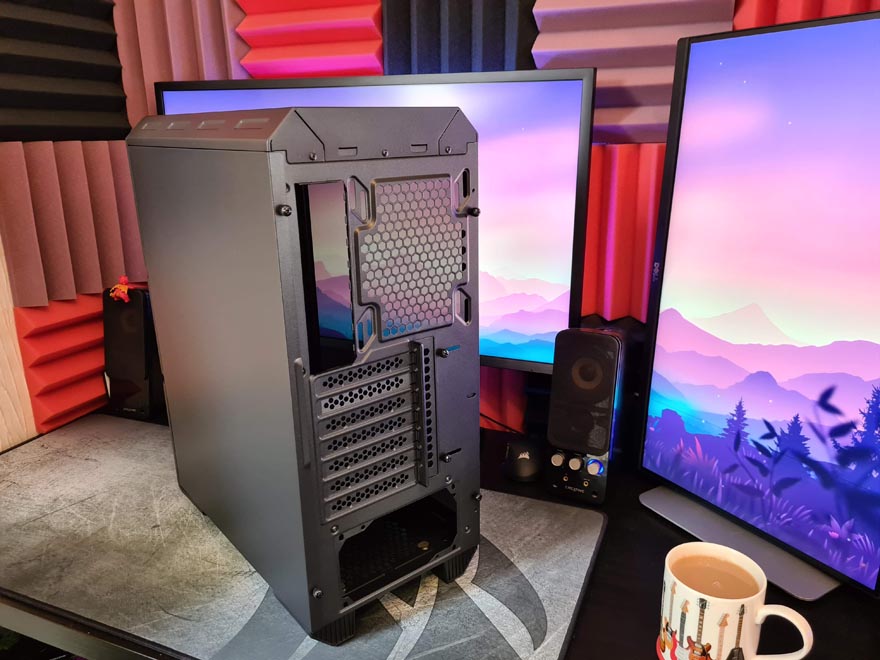
The top of the case looks great, with lots of embossed sections on the edges of the case, and a slight recess to the top mesh filter that lines up with the lines of the front panel.
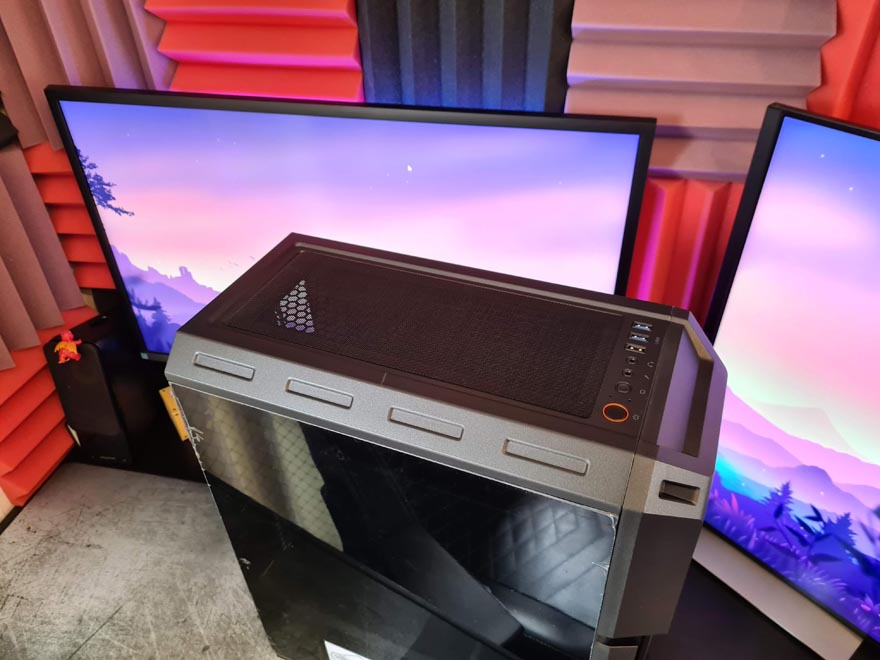
Below that mesh, a couple of fan mounts, perfect for adding an AIO in the top of the case.
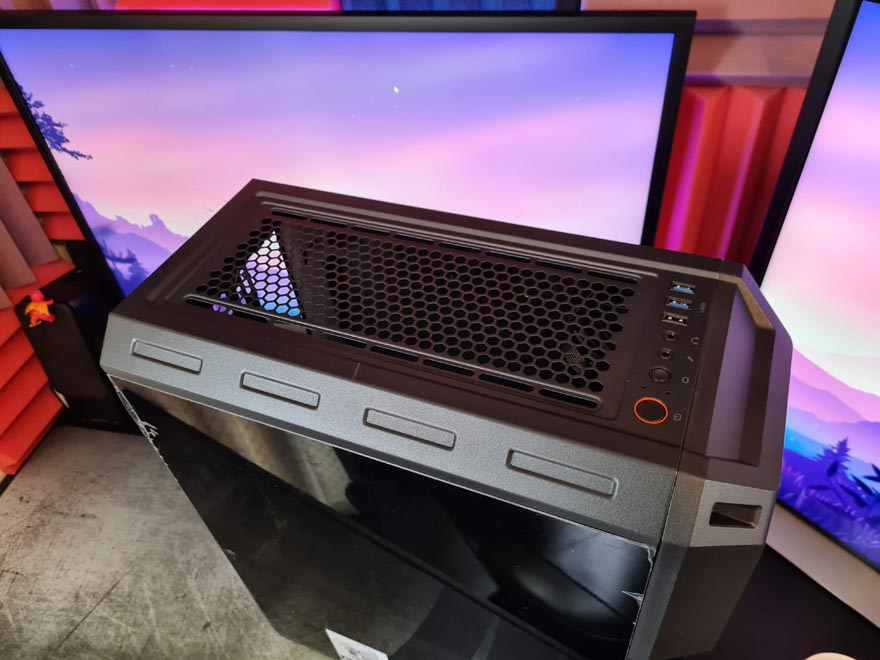
The front I/O panel is nicely designed, offering up three USB ports, audio jacks, power controls, and rather than a reset button, it’s actually an RGB lighting control as this case doesn’t support lighting sync with your motherboard, but uses its own built-in PCB instead.
